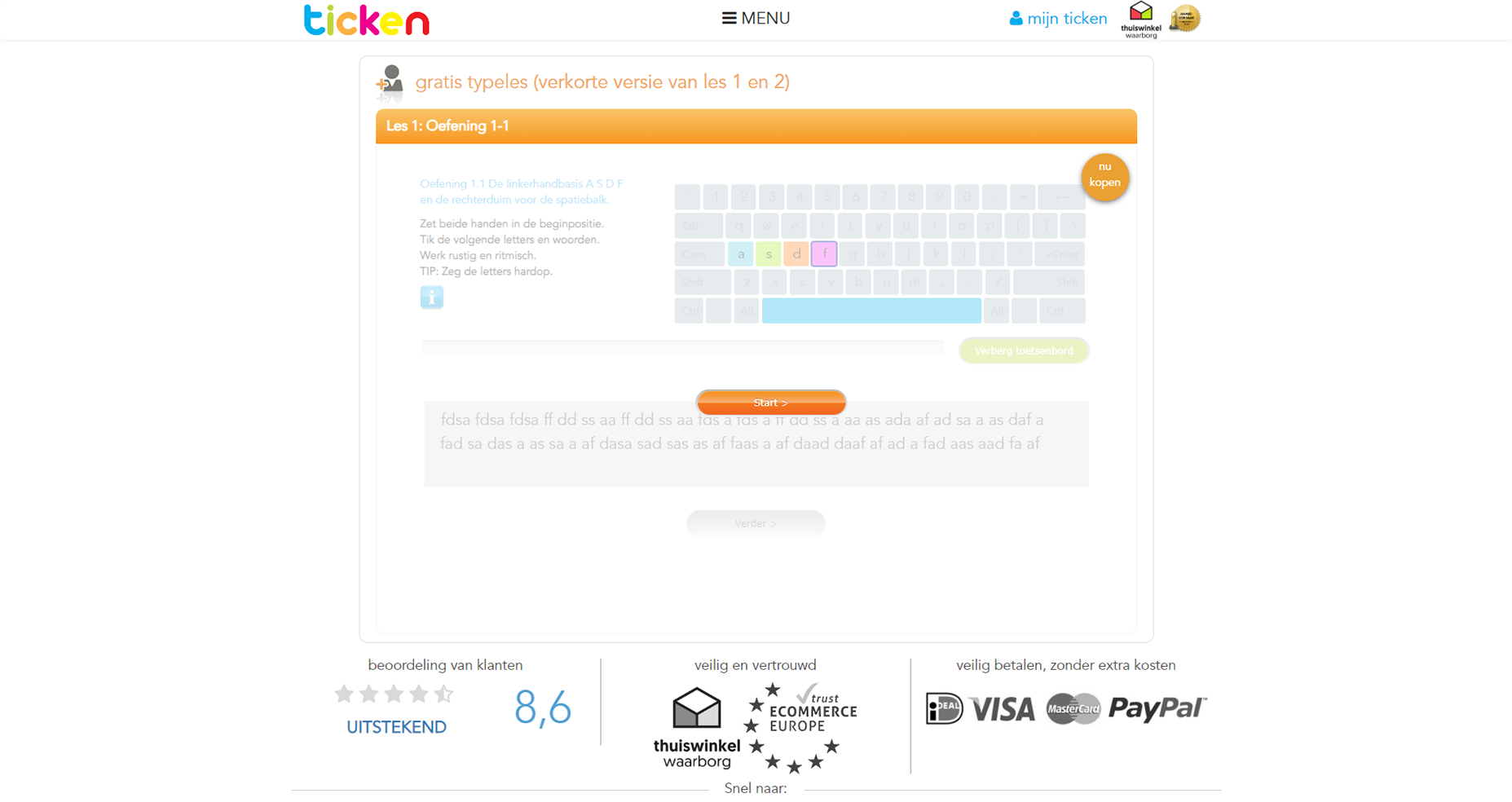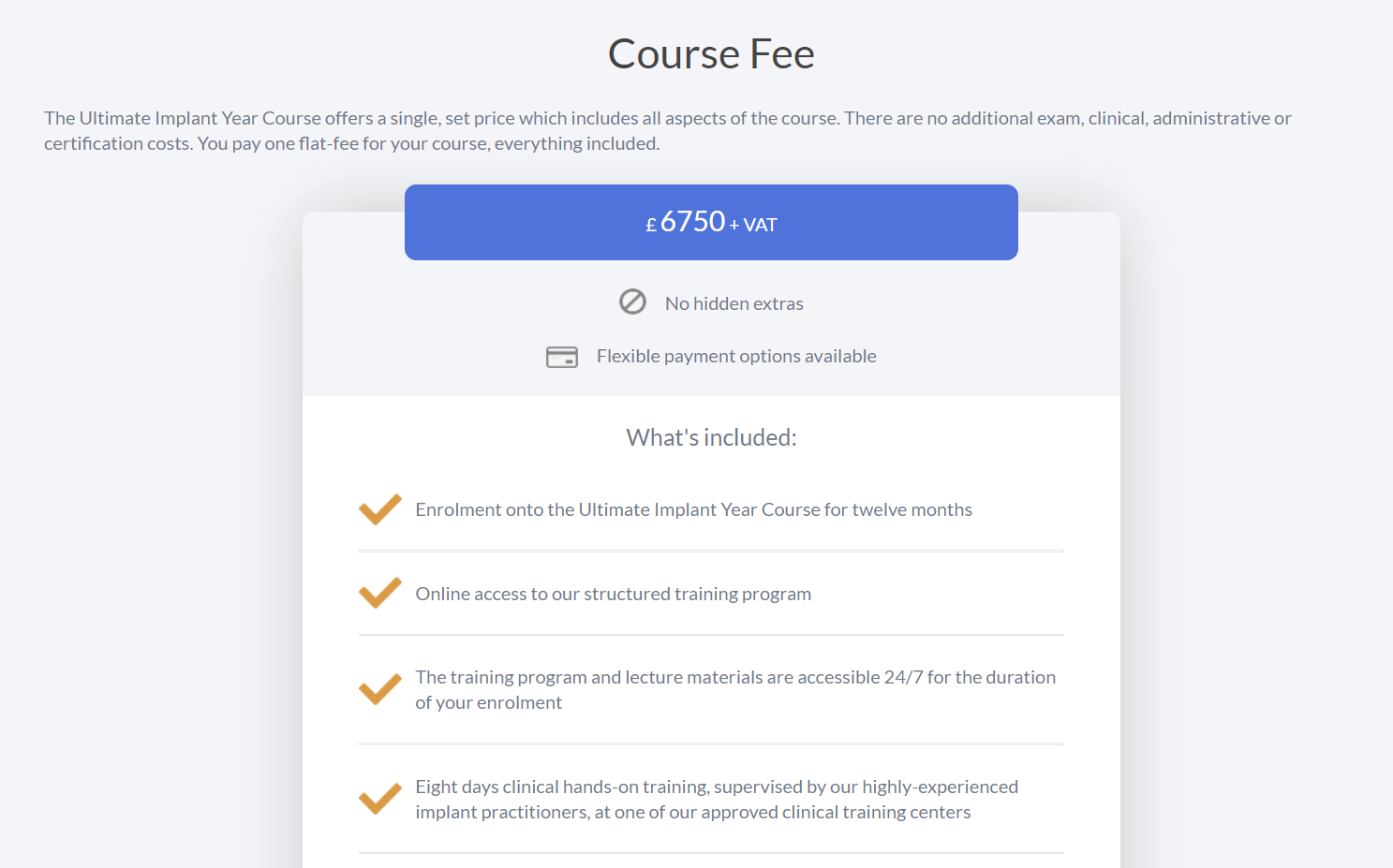If you have valuable knowledge that people are willing to pay for, the time has never been better for launching an online course. With the advancements in technology, people are becoming more accepting of online training. For many of them sharing their knowledge online is a serious business. However, starting one can be tough - that’s why in this article we will describe the market conditions, explain what to do on the business side of things, and show some success stories.
How Belitsoft Can Help
- Course creation. If you have the knowledge but don’t know how to turn it into a elearning course, we can help to do just that. Check out our elearning portfolio
- Custom course platform development. Some courses are just too unique in their instructional design to fit a premade platform. We can develop a custom one that fits your needs.
Favorable Conditions
Educational technology (edtech) market has been growing rapidly for the past decade. In 2019 investment in elearning companies has reached USD 18,66 billion and the overall market is expected to grow up to USD 400 billion by 2026. And some businesses in the industry have seen over 200% growth in their userbase due to the COVID-19 pandemic.
What’s more, people are getting more used to eLearning in general. British and American doctors, for example, already use it for continual education, language-learning apps like Duolingo have hundreds of millions of users, and even school students are learning online.

Online courses can definitely be a profitable venture, as there are numerous examples of people earning quite a lot of money with them. John Omar and Eliot Arntz, for example, earned over a million dollars with their iOS development course. Rob Percival, featured on Business Insider, has released four courses earning him around three million.
That is not to say that it is going to be easy. Just like any other business, it requires hard work. The heroes of the abovementioned success stories didn’t have the money just fall into their laps - it took careful planning, patience, and some clever marketing to get where they are now. But the resulting profits and freedom are totally worth all that.
Why Do You Need To Launch an Online Course Business?
With a little business sense and knowledge you can create a new source of income for yourself. It can be beneficial for anyone with expertise that people are willing to pay for:
- Domain experts. People with outstanding experience or achievements in a certain field can create an online course to monetize them. For example, the Masterclass platform builds its entire business model around high-profile trainers: Tony Hawk (skateboarding), Neil Gaiman and Margaret Atwood (creative writing), Gordon Ramsay (cooking), Samuel L. Jackson (acting), and many more. Nothing is stopping you from re-using this model for your business.
- Coaches and trainers. If people are willing to pay for what you know, they will likely pay for you teaching them online. Cornelius Fichtner, a project management trainer, started his online course and extended his audience a thousandfold.
- Non-fiction authors. Publishing a book of practical advice is a powerful driver for a personal brand. Creating an online course based on this book can further improve it and add more profit to boot. For example, Neil Patel, an online marketing guru, has a course that supplements his published work.
Is This Business Right for You?
Anyone can start an online course, but not everyone has what it takes to make it successful.
1. Knowledge
Whether it is coding, photography, music, or training cats, you have to have practical knowledge of the subject. Otherwise, you won’t be able to answer the questions from your learners. Moreover, your course won’t bring any value to the customers, who will ask for refunds.
This knowledge should also be something that enough people are willing to pay for. Teaching the dragon language from Skyrim might seem like a cool and novel idea at first glance, but it is unlikely to have long-term earning potential.
2. Teaching Methodology
Being good at something is one thing. Teaching it to other people is quite another. If you don’t know how to impart your knowledge on the others, there are online courses for that as well, by the way.
Another part of this is the presentation. Depending on the nature of your course, it could be done best by screen capture, video of you doing the thing, or any other kind of visuals.
In some cases, the methodology is so unique and effective that it becomes a major selling point for the course. See a couple of examples here and here.
Steps to Creating an Online Business
The course itself is not yet a business - it is just a product. It certainly is important, but it needs many other elements to propel you to success. This is how you should go about creating a course-selling business.
1. Decide on a Topic
Suppose you are good at teaching German as a foreign language. So you decide to bring your skills online and find out that there are thousands of other people offering a similar service.
That’s why it is a good idea to narrow down the scope of your course. Instead of just “German as a foreign language” teach “Business German”, or “German for Tourists”, or “German Slang”. Or even “Teaching German as a Foreign Language” - maybe there is a market among the aspiring instructors.
Besides distinguishing yourself from your competitors, this approach is more cost-efficient. Making a single course encompassing the whole scope of the German language is a massive task. But breaking it into small chunks and releasing them piece-by-piece will allow you to start earning money earlier.
Dentistry, for example, is a huge field with a ton of potential subtopics. However, Dr. Ken Nicholson specializes in implants, so this is what he chose as the primary focus of his online course.
After launching the core course and seeing its success, he expanded the offering: a course for nurses, a course in Spanish, etc.
2. Define a Target Audience
Before committing fully to creating an online training program and paying the associated expenses, it is important to see whether there would be enough people willing to pay for the end product.
There are several ways to do so:
- Research. When Martin Beijer was working on his third project, a platform for teaching math and Dutch to high school students, he only needed to see the stats for the number of children who work with private tutors to augment the curriculum. Enough people were willing to pay to prepare their kids for important exams, so there was a niche for this project.
- Asking. If you have a social media presence or other forms of a powerful personal brand (email list, popular website, etc.), you can simply run a poll inquiring about the possible topics. This will give you a ballpark idea of how much demand there would be for your course.
- Presales. What’s a better way to gauge the willingness to buy your product than actually selling it? Companies like Kamibot have been using platforms like Kickstarter to both finance the development of their products and check whether their offering is attractive enough.
Your target audience is a major factor that affects everything - from your topic to your presentation and pricing.
Children, for example, are taught in a different way than adults. Moreover, it is their parents who will buy them your course, so that should be considered in your marketing efforts later. The old people, on the other hand, are generally not as tech-savvy as their younger counterparts.
Picking the right target audience can make-or-break the course, so time spent selecting it and learning more about it is never spent in vain.
3. Research Your Competition
If you think you don’t have any competitors, there are two possible scenarios: either your topic is not profitable enough for other people to work on, or you haven’t given it much thought. The chance that you are opening an untapped market are infinitesimal. Just to be sure, check out Google Keyword Planner - it shows how often do people search for certain words online, which can be used to extrapolate the actual demand for your future course.
Example of keyword planner search
Start by researching other online courses on similar topics. What exactly do they offer? How do they present themselves? How do they gain new customers? This could both give you ideas for improvement and show some ways to stand out from the crowd.
Other competitors can include live classes, books, podcasts, and YouTube videos that serve the same target audience.
4. Create a Personal Brand
No one is expecting you to become as well-known as Richard Branson or Elon Musk. However, personal branding is important for two main reasons: authority and positioning.
Firstly, you need to demonstrate to your future customers that your knowledge is worth something. You can prove it by showing your experience, awards, and professional achievements. Moreover, if you are already a well-known expert in your field, you can charge a premium for your course and it would still be in demand.
Secondly, you need to set yourself apart from your competitors. What do you offer that they don’t? Maybe you have closed a thousand high-profile deals with German partners? Or lived in Germany for decades, while being immersed in their business culture? The more achievements you have, the better your prospects are.
This is also a way to set up your positioning. You can’t please everyone, so focus on a specific target audience you’ve defined at step 2 and work on your brand accordingly. For example, if you have worked with German companies for years and closed deals with them, it makes you more appealing to the businessmen.
There are other benefits a personal brand can provide, like networking opportunities or the potential to expand into other niches more easily.
5. Attract People
You can’t earn money from your course if no one buys it (duh). That is why you need to begin your marketing activities even before your course is live, to build anticipation and even hype (if you already have a strong personal brand).
Start with offering something for free in return for attention and email addresses. This can include useful articles, simple brief lessons, or any other thing that is valuable enough for people to keep you in mind. Then, once your course goes live, you will already have a user base that is aware of it.
Note that marketing should be done continuously if you want to succeed. As for the exact method - content marketing, email marketing, SEM, etc. - that is entirely up to you.
Landing Page
The first thing you’ll need to do is create a landing page. It would be the public face of the course and the place all your advertising will send people to. Premade SaaS and self-hosted platforms have the option to edit this page. Custom solutions can be built to your specification.
Here’s what you need to include on a landing page:
- Catchy title. This will attract the visitors’ attention and compel them to learn more.
- Pain points. Completing your course solves certain problems for the learners. Describe them vividly and stress what could happen if these issues remain unaddressed.
- Solution. Write about your course and mention how exactly it will help solve the above mentioned problems.
- Value. What exactly does your course give learners and how does it differ from its competitors?
- About the teacher. A few sentences about you and your qualifications to lend credibility to the course.
- Pricing/Warranty. This would likely be something every visitor is interested in. How much your course costs (with tiers), and is there any chance to get a refund.
Marketing
There are several major options for marketing your e-learning product:
- Ads. Contextual advertising on search engines, banners, promotion blocks on social media, and other forms of advertising. This is a valid option for promoting a course because of the wide variety of available advertising software and reasonable costs. For example, advertising on Google for the keyword “learn German online” costs $3-5 per click. Compare that to the “offshore software development” at $104 per click.
- Social media marketing. Depending on your target audience, different social networks can show different efficiency. For example, learners for business courses can reliably be found on LinkedIn, while art or fitness courses would be better off looking for learners on Instagram. The goal is to build a community that would serve as brand ambassadors and social proof.
- Content marketing. Show your expertise and attract new users by making useful and engaging content: articles, infographics, videos, etc. The nature and topics of the content would, of course, depend on your target audience. This goes hand-in-hand with Search Engine Marketing/Search Engine Optimization (SEM/SEO) as good content increases your discoverability.
- Affiliate marketing. Have somebody else promote your course for the cut of the revenue. Suppose you created a video-editing course. You partner up with a movie reviewer on YouTube and give them a special personalized link. If a person coming through this link makes a purchase, the blogger gets a share of the money, so it is in their interest to advertise you.
There are many more options but these ones are the most popular and cost-effective. Also, premade SaaS platforms like Udemy tend to have inbuilt on-platform advertising instruments that are also worth a look.
6. Develop a Course
How you should go about creating a course entirely depends on its nature and the platform you want to use to sell it. In some cases, the platform itself will provide all the necessary software. In other, you’ll need to turn to third-party authoring tools or even hire a development company to make a unique training program. For more details on that feel free to read the relevant article.
A good practice is to conduct user acceptance testing before the release. If you can, gather a group of people belonging from your target audience and have them try your course out. The feedback they provide could be invaluable and would show whether the lessons you’ve included provide as much value as you’ve expected.
Note! Depending on the choice of the learning platform you might have to adapt your content to it.
The format and teaching method would depend on the topic and the audience that you’ve defined in step 1. For example, the founder of Extraas, a platform that prepares children for exams, knew that his target audience would benefit the most from a game-based learning approach. This is why he built his entire project around it and got many customers who rate it 9.4/10 on average.
These are the options you have for content creation:
- Do it yourself. Most online courses consist of a series of video lessons, sometimes supported by PDFs, PowerPoint presentations, and other extras. This is something you can make yourself with a good smartphone camera, a tripod, and a computer with the necessary software.
Note that there are specialized authoring tools - applications designed for creating learning materials. They have more domain-specific features and make it easier to work with content like that. For more details on how to develop learning content yourself, see our articleon it. - Hire someone. If you don’t have the time required for making quality educational materials, you can contact a company that specializes in such work. You will be the subject matter expert, while they will handle all the technical issues.
In the cases where you need more complex learning content (VR simulations, serious games, unique exercises, etc.) this would be the preferable option, as learning to do this yourself would take an unreasonable amount of time and effort.
Creating the course: planning
Making a detailed plan of your course would not only save you a lot of time on remaking and editing lessons but would also give you an understandable program to work with.
If you’ve decided to work on the materials yourself, start with defining the learning objectives - what the users should know and be able to do by the time they finish your course. This will set a benchmark for you to judge whether the training was effective.
The optimal course of action would be to work backward and think of the final lesson in the curriculum. Then, move to its prerequisite and so on, until you get to the reasonable initial lesson.
By the end of your work, you should have a clear outline of the curriculum and a path that a learner needs to follow to succeed.
Creating the course: education
The whole point of an online course is to teach something. So you need to make sure your lessons deliver on this promise.
The key is to keep the balance: giving enough information for the lesson to be useful but not too much so your learners don’t feel overwhelmed. This is where the objectives you’ve defined come into play. Before adding something, think about whether this will ultimately bring the user closer to the goal. If the answer is “no”, feel free to skip this bit of information.
This is also the first step to differentiate your course from the competitors. Think about how can you make it different, whether by presenting information from a different angle, giving more practical examples, or using a more efficient teaching method.
The educational side of the content is at the core of the course’s learning experience.
Creating the course: engagement
Once you have an idea of what you are going to teach in your lessons, it’s time to think about how it would be done. This is the difference between people finishing your course and dropping out along the way - the average completion rate is 5 to 15%.
For online courses, there are three things you should strive for in this regard:
- Clear expectations. Once again, your learning objectives come into play. Having a defined goal motivates learners and sets their expectations at the appropriate level.
- Usefulness. This goes hand-in-hand with the previous one. If the learners know that your course would benefit them in some way, they will work harder to get this benefit.
- Ease-of-use. If all the information is accessible without unreasonable obstacles (e.g. clunky and illogical interface), users would perceive it as better and more useful, thus getting more motivated.
To engage your users you can also provide a different viewpoint, arrange your lessons as a story, or use “cliffhangers” for creating an emotional investment.
7. Monetization
So now you have a product and a place to sell it. It is time to think about how exactly you will earn money with it. This is a multifaceted question that requires a lot of thought. Otherwise, you might lose revenue or even severely hamper your marketing efforts.
Business model
There are two broad categories that all the courses fall into: one-time payment and recurrent payments.
The first one implies a single money transfer (could be split into several installments) in exchange for long-term (or even unlimited) access to the course. The access time is usually long enough to complete the course several times. To appeal to a wider audience, you can offer several payment plans with different perks.
For example, Ticken uses this approach. The platform offers four payment plans. The basic one has just the course, while the more expensive ones include certification and a special keyboard cover that makes training more effective.
The second one means that a learner regularly pays a certain amount of money to get limited-time access to the course. Once again, this can be open to interpretation. For example, a 6-months plan could give the learner a per-month discount and at the same time allow you to make more sales.
TET, an online driving theory learning platform, is monetized in this way. There are four plans (1,2,4, and 6 months) with each giving the user a better bulk discount.
The models can be combined. For example, if you run a creative writing course, the basic curriculum could be subscription-based, while various extras (like feedback from the professional editors) require single payments.
The rule of thumb in choosing a monetization model is this: if your course can be finished in one go, charge a lump sum; otherwise, go for a subscription.
Price
Setting the right price is very important for two main reasons:
- Profit. Finding the balance between the number of sales and an average purchase amount is key to maximizing revenue.
- Positioning. Sometimes you want a luxury dining experience in a high-class restaurant, other times you would be just fine with getting a quick meal at the nearest watering hole. This principle works in the eLearning industry as well. If your course teaches people how to choose a luxury yacht, pricing it low would turn the customers away.
One thing you absolutely shouldn’t do is setting an extra-low price in hopes of attracting more customers. This is why:
- It is pointless. Even though your course is the cheapest, selling it is just as hard as with an expensive one. You’d be better off fitting the price to your target audience. After all, Ferraris aren’t cheap but somehow the manufacturer manages to turn a profit.
- It devalues your product. People intuitively tie the price of a product with its value. They don’t expect cheap to be good, so keeping the price higher might entice more people to buy the course.
- Ineffective marketing. Suppose you spend USD 100 on advertising a course that costs USD 12. You will need at least nine sales to turn a profit. Increasing the price to USD 15 will bring the necessary sales down to 7. The low price also prevents you from using affiliate marketing, which has proven to be quite effective. Potential affiliates just won’t be interested in the pitiful commission they could make from promoting a cheap course.
- Damping. Just as there is always a bigger fish, there is always someone with a lower price. Trying to outcompete by bringing your own price down will only lead to financial ruin - use the quality of the material and usefulness of the course to gain new buyers.
Getting the price right would require effort. You can start by researching the competition and selling your product for a similar sum. Then try raising and lowering the price until you hit the sweet spot.
Value
The length of the course has no direct correlation with its perceived value. Sometimes it’s the opposite - the above mentioned Ticken uses the fact that it’s the shortest touch-typing course on the market as its unique selling proposition. In just 15 hours you will be able to type 140 characters per minute!
There are different ways you can create value for your students besides making the course fun and useful.
- Certification. Awarding a certificate to those who complete your course is a way to give learners additional motivation and achievement they can share. It could be a paid add-on or a part of the main course.
- Consultations/coaching. Your involvement as a teacher is valuable. You could hold individual sessions with your learners, provide feedback for their homework assignments, or run extra webinars.
- Extra resources. Downloadable guides, worksheets, or manuals make the course seem more desirable.
- Pricing tiers. Giving users several options in this regard makes them feel in control. Besides, allowing them to pay in several installments makes your product attractive to those who can’t afford a single large payment.
8. Retain Customers
If you are familiar with marketing metrics, you might know about the CPC (cost per customer). Getting each new person to buy your course costs money, whether it is spent on ads, content marketing, or giving away flyers. Repeat business, on the other hand, is far more cost-effective.
Customer retention can be done in several complementary ways.
The first one is a valuable product. If your course has been useful and fun to the customer, there is a high chance of them buying your further courses.
The second one is customer service. When (not “if”) a learner has questions, they need to be able to ask you. Quick, genuine, and polite answers will endear you to your audience and cause them to support you.
Finally, keeping in touch with your students, perhaps offering them more free stuff, is also a way to keep them returning to you.
9. Grow
Once you’ve released your first course, you’ll realize that there is so much more you can teach to the people. This is the right time to expand your offering. Create new courses that are relevant to the target audience. Build a team of like-minded instructors to provide better lessons and customer service. Or maybe branch out in other similar niches. In any case, all the previous steps have brought you here, so they can be repeated for the same good results.
Expansion
The first and the most obvious thing you could do to expand is to create another course. Now you can cover a different aspect of the topic or make an in-depth version of your basic course.
The second option is to add extra goods as a complement to the course. For example, Ticken sells a special keyboard cover to discourage looking at the letters and show learners the correct finger placement at the same time. It can be bought separately or as part of a more expensive payment plan.
You can even partner up with a manufacturer of goods that would be useful for your learners. Although this option would require a decent number of learners before it can be implemented.
Upgrades
Another route you can use is outfitting your course with all manners of improvements to make it more engaging and more effective.
- More content formats. Some people like videos, others prefer text, still others favor podcasts. Adding new types of content to your course makes it appealing for everyone.
- Gamification. Adding game elements to a serious environment is a popular and effective approach to increasing engagement. Virtual rewards like points and badges are motivating enough to keep users glued to your course. For detail on gamification, see the relevant article in our blog.
- Microlearning. With decreasing attention spans (thanks for making it this far into the article!) and busy schedules, sitting through 45-minute videos might not be very appealing to your learners. Microlearning is a concept that suggests breaking the lessons down into smaller chunks so that they would be easier to study. There are topics where this approach doesn’t work but it has proven to be very effective for on-demand learning.
Success Stories
Here are some of the eLearning businesses that we helped launch.
Ticken
Ticken is an award-winning online touch-typing course. It is based on fun practical exercises and allows learners to raise their typing speed to 140 characters per minute in just 15 hours.

As Ticken uses the teaching methods that aren’t supported by MOOC platforms, its author hired us to develop a custom standalone course website. And the initial investment in development has more than paid off: TIcken had sold more than 110,000 licenses.
Ticken is distributed under a Software-as-a-Service model. A single payment grants the customer year-long access to the content. There are four basic plans; the more expensive ones include extras like a special keyboard cover and a certification option.
In addition, this course has a version for businesses and schools. These have different pricing models and allow for licenses to be purchased in bulk, saving the customers money while still being profitable for the course owner.
For more information on the development process, see our portfolio showcase.
TET
TET is a custom driving theory course that helps students prepare for exams. It boasts a gamification system and a test-based learning approach that increases knowledge retention.
Once again this was a custom-built website for a course that doesn’t fit any MOOC platform. It actually offers three slightly different courses: one for a car, one for a motorcycle, and one for a scooter. All of them are priced the same, though.
There are four packages: 1, 2, 4, and 6-month access. The last three also include a theory course, not just tests.
TET is rather popular: more than 22,000 users have passed its tests and the reviewers rate it 8,4/10. Feel free to read our portfolio showcase to learn more about this project.
Extraas
Extraas is a platform for teaching mathematics and Dutch to the children in the Netherlands. It heavily utilizes gamification and game-based learning for better motivation and knowledge retention.
At the moment, no MOOCs support game-based learning, so a standalone platform was chosen to host this course. There are three main sections: mathematics, Dutch, and tests. All of them are priced the same, but you’ll also need to purchase them separately.
There are four subscription plans: for 1, 3, 6, and 12 months.
Extraas has been launched relatively recently, but it has already received high praise from its users - the average rating is 9.5/10. For more information on Extraas check out our showcase.
Conclusion
Selling online courses can seem simple, but it is a business just like any other and requires a significant amount of work to be successful. But if you have valuable knowledge and understand how to pass it on, you can make some serious money with it.
We can help you with that, by the way. If you feel intimidated by the amount of work that goes into a course, we can convert the knowledge in your head into an attractive and effective series of lessons. And if the course is too complicated and unique for the common MOOC platforms, we can build you a custom one, just like we did for our other successful customers.
Rate this article
Recommended posts
Portfolio

Our Clients' Feedback
























.jpg)
.png)
.jpg)
.jpg)
.jpg)
.jpg)














Belitsoft has been the driving force behind several of our software development projects within the last few years. This company demonstrates high professionalism in their work approach. They have continuously proved to be ready to go the extra mile. We are very happy with Belitsoft, and in a position to strongly recommend them for software development and support as a most reliable and fully transparent partner focused on long term business relationships.
Global Head of Commercial Development L&D at Technicolor